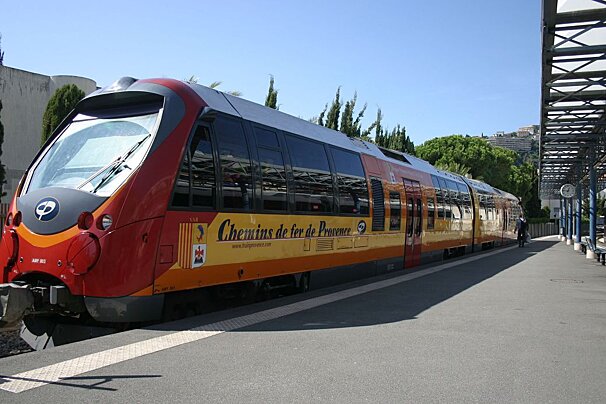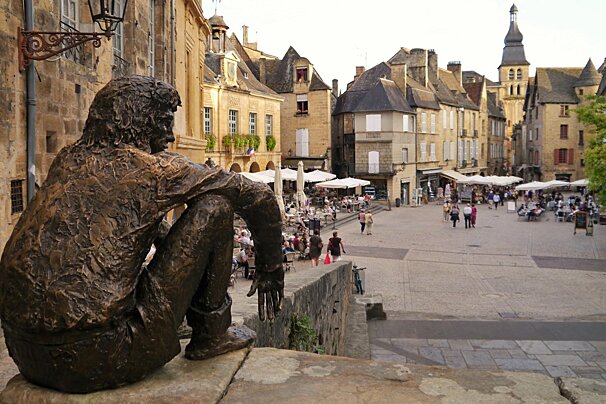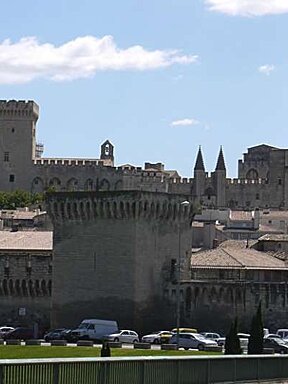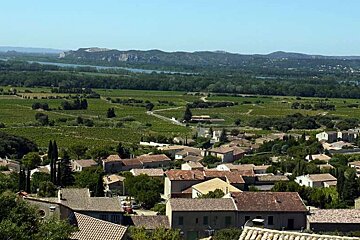
© Seeprovence.com

© Seeprovence.com
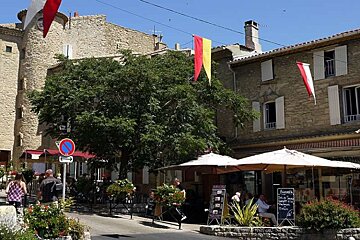
© Seeprovence.com
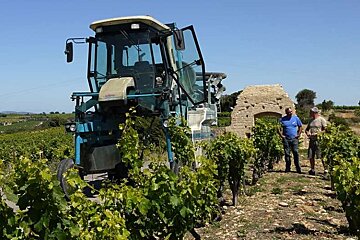
© Seeprovence.com
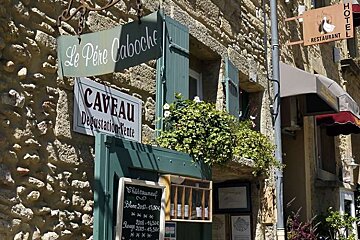
© Seeprovence.com

© Seeprovence.com
Châteauneuf du Pape
Famous wine growing region in the Rhône valley
Châteauneuf du Pape lies in the heart of the Vaucluse region, 19km to the north of Avignon and 10km south of Orange. It is of course, most famous for the wine it produces, but the village itself is also worth a trip, with its pretty medieval lanes and ruined castle.
The town's history dates back to the 12th century when it was called Castrum Novum. When the Popes moved to Avignon in the 14th century, they built the castle which became their summer residence throughout that century. The castle was destroyed in the 16th century during the Wars of Religion, and again in World War II.
Watch this
History & Culture in [locality]
This famous wine producing region was first cultivated by monks over a thousand years ago, and the popes in Avignon developed the vines in the 14th century.
The composition of Châteauneuf du Pape wines is tightly controlled by the AOC - a blend of thirteen varieties of grape, of which the main ones are grenache, syrah and mourvedre.
The wine is farmed organically and there are many regulations wine-makers have to follow in order to gain the prestigious label of AOC Châteauneuf du Pape.
The unique conditions in which the grapes grow are largely responsible for the quality. The patch of land on which the vines are grown (the terroir) is fairly stony. The stones heat up from the sunshine during the day and then slowly release their heat during the night, so that the vines never get too cold. The mistral wind that blows from the north keeps away insects and pests, meaning no artifical pesticides are required. These robust, rich wines are best suited to cold winter evenings. They don't come cheap, but you can be sure of a high quality, distinctive wine.
Sights & Attractions in [locality]
There are many wine producers in the area who welcome visitors for tastings and tours. Indeed the village is full of 'caves' where you can taste the wines for free (degustation gratuite) or 'caves' where you pay a small fee to hear about the production of the wine and taste domaine-specific wines (degustation) - some of these include sampling local produce or cheese at the same time. There are plenty to choose from in the village centre, so if you want to just have a general introduction to the wine of the region, just pick a few at random! The tourist office may also be able to point you in the right direction if you want a little bit of help.
For vineyard tours, you will probably have to arrange these in advance by calling the specific domaines ahead of your visit. Try our recommended Vineyards, or have a look at the complete list of Domaines and Caves, courtesy of the tourist office. Alternatively, book yourselves on to a guided tour, there are a number of companies who arrange visits, workshops and tastings, both in the village and around the vineyards.
The Musée du Vin displays the history of Châteauneuf du Pape wine and its vineyards, along with ancient tools and presses. You also have the chance to enjoy tastings in their cellar and shop. On a different note, there is a chocolatier Vin, Chocolat et Compagnie at the edge of the village which offers chocolate making workshops, tastings of both chocolate and wine, and of course, their shop.
The village has a smattering of art galleries and artisan workshops.
A few kilometres away is the village of Courthezon is also worth a visit, it's a medieval village set on the banks of the rivers Seille and Rhoannel. It has a number of formal gardens and an arboretum, as well as nature trails around salt ponds.
Events in [locality]
The market is held on Friday mornings, in La Place de la Renaissance.
Things to do in [locality]
The village is a nice place to wander around for a few hours, even if you do not want to taste any wine. It has a medieval feel to it, with charming lanes, tumbling flowers, pretty squares and plenty of places to grab a drink and sit and watch the world go by. It's a fairly polished affair, no doubt thanks to its fame.
The tourist office arranges guided tours of the village during the summer months (for a small fee), but you can easily wander around and discover the village by yourself (you can also pick up Heritage Trail brochures that help guide you at the tourist office). Some of the sights to see include the Romanesque church Notre Dame de l'Assomption (from the 12th century), the chapel Saint Pierre de Luxembourg (from the 19th century), the chapel Saint Theodoric with its protected frescoes, and of course the ruined castle. Only a couple of the walls and a tower remain of this ancient Papal palace but the views from the top of a valley of vineyards with the mighty River Rhône in the background are sure to impress.
If you'd like to explore the countryside a bit more, you can do so by foot or by bicycle. There is a 16km walking trail which starts at the castle (circuit is brown trail) which takes you through vineyards towards the River Rhône, around in a loop to finish back in the village.
A shorter alternative is vineyard trail which leaves from La Maison des Vignerons. The trail follows fifteen marked panels with information about the vines and the area and you can choose between 3, 5 or 7km routes. For more nature, try the 10km path around Islon St-Luc. It 's a circular route that follows a river tow-path that takes you down to the Rhône, and has useful information boards around the route. There is also a much shoter walk that starts here, of 2km, which is suitable for families.
A cycle route around the vineyards starts in the village and takes you to Sorgues and Bedarrides before returning to your starting point. It's 28km and should take 2h30 - 3 hours. It's signposted all the way and is of an easy level.
Dining in [locality]
There are the usual number of traditional cafés and restaurants in the centre of the village, all of which will provide a perfectly decent meal. You may find they charge a higher price than restaurants in the surrounding villages simply because of the well known name.












